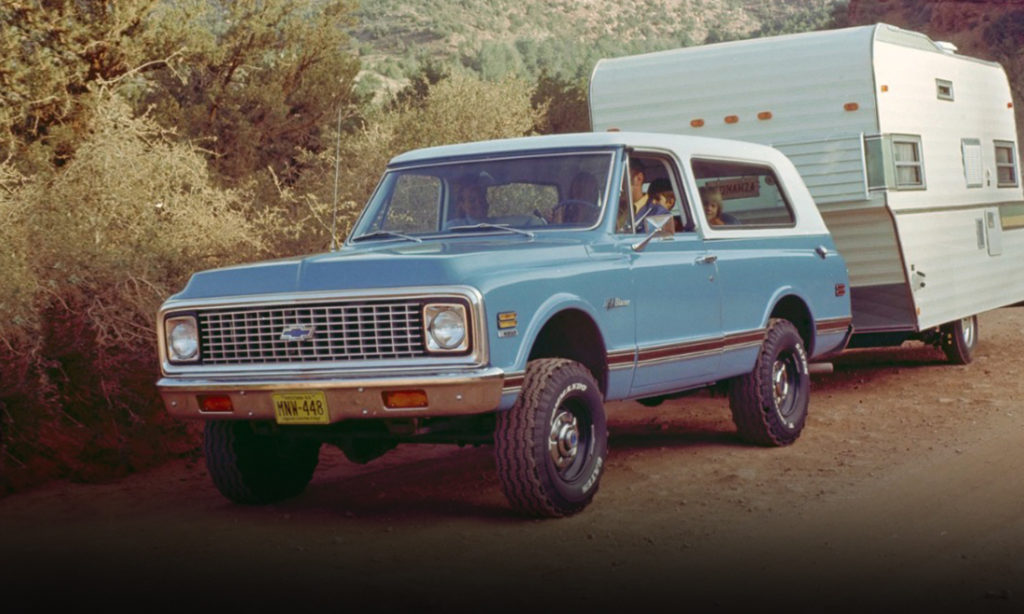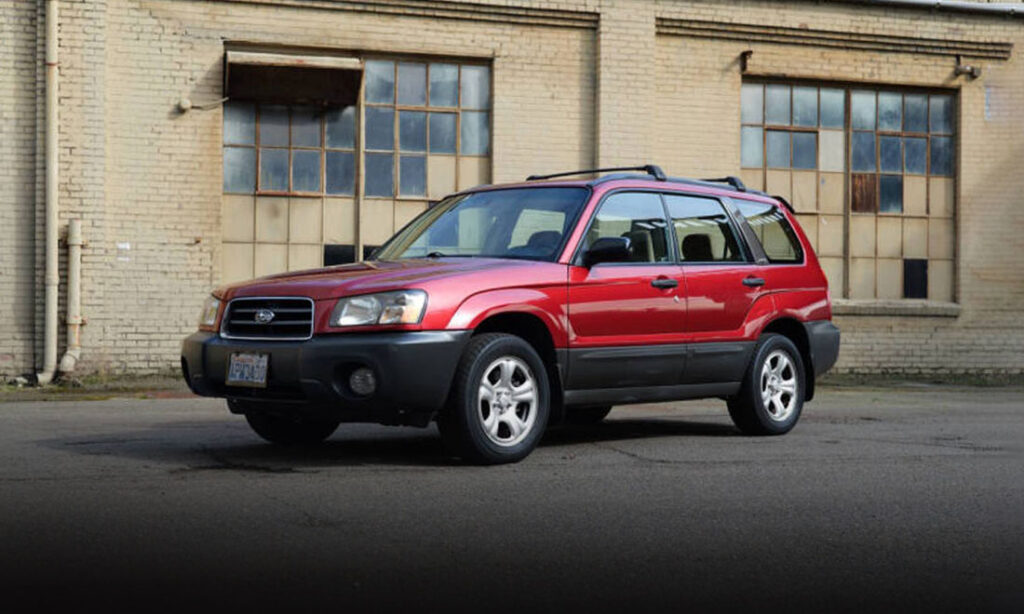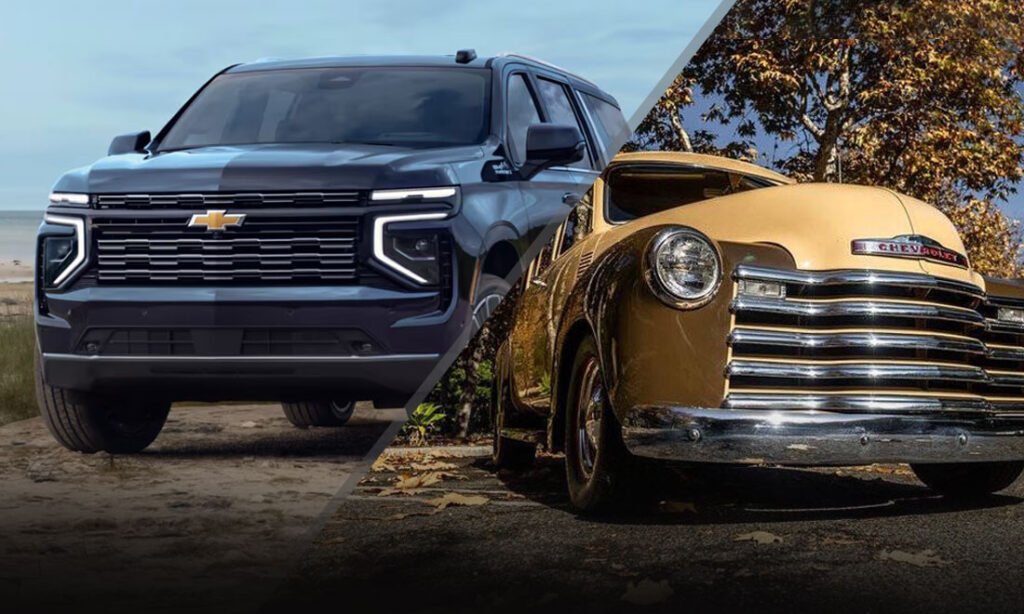Nissan Z Car Generations: Through the Years
The Fairlady Z debuted in 1969, kicking off a sports car lineage that continues today. Get facts on all the different Nissan Z cars!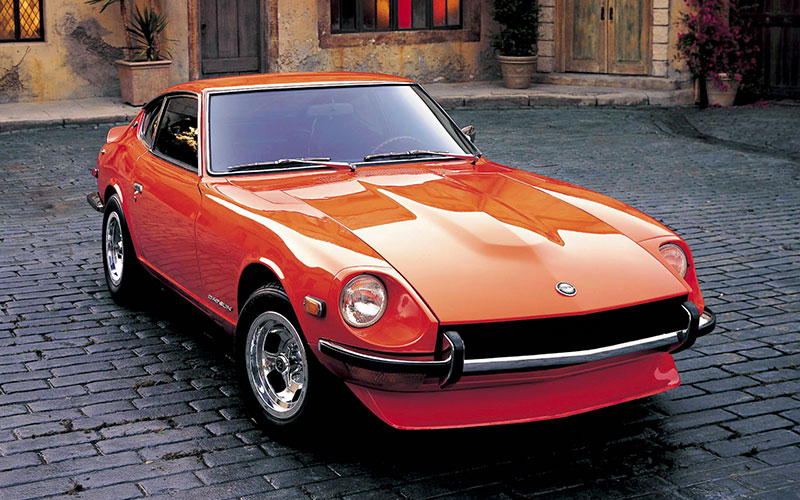
The Nissan Z Cars
Nissan got its first taste of racing success back in 1958 at the Round Australia Trial where the manufacturer won the Class A group with their Austin inspired Datsun 210. The following years saw Nissan engineer cars that were better suited for track use like the Datsun Fairlady 1500 Roadster, Prince Skyline 2000GT, and the Datsun Bluebird. Eventually this led to the company’s first two-seater sports car – the Fairlady Z. Thanks to the influence of Nissan’s Mr. K, this car turned into an automotive icon and got American’s excited for Japanese performance vehicles.
The Fairlady Z of 1969 was just the first in a now long line of ‘Z’ branded sports cars. A lineage that continues today even while the Nissan brand has been faced with financial adversity. Take a look back at the Nissan Z through the years and get to know the modern iteration of this beloved sports car family.
Nissan Fairlady Z – First Generation (1969-1978)
- Under the direction of Yutaka Katayama, better known as Mr. K, Nissan devised a vehicle inspired by European sports car design that offered both an affordable price point and acceptable performance.
- In 1969, the company unveiled the S30 generation of the Nissan Fairlady Z, a two-seater sports coupe with styling similarities to the Jaguar E-Type.
- Nissan’s president at that time, Katsuji Kawamata, chose the Fairlady Z name after being impressed by the American Broadway musical My Fair Lady.
- While the original name has American origins, then President of Nissan of Nissan Motor Corporation USA, Mr. K, thought it wouldn’t work for in the American market. It was instead sold as the Datsun 240Z when it hit American shores in 1970.
Datsun 240Z
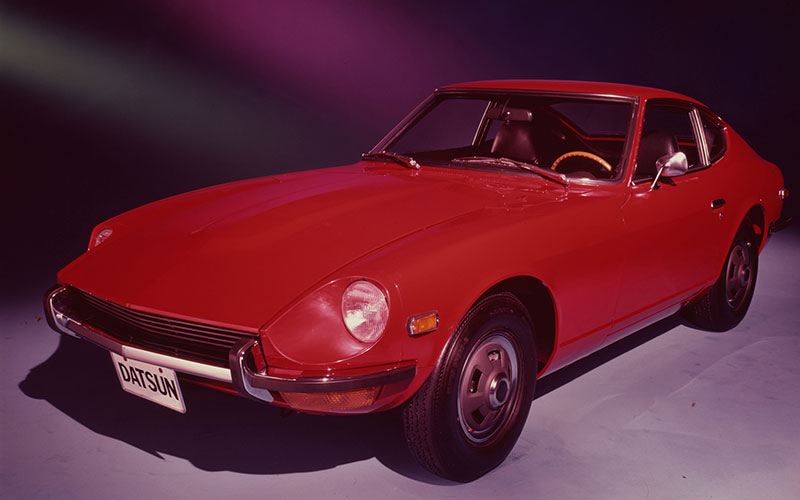
- Nissan closely priced the model to that of Britain’s MGB GT. For that price, the Datsun 240Z offered four-wheel independent suspension and a 151-horsepower 2.4L inline-6 engine.
- Initially, the 240Z was only available with a 4-speed manual transmission, but a 3-speed automatic transmission was added in 1971.
- Nissan entered the Datsun 240Z in the 1971 East African Safari Rally where it won the event. The 240Z went on to win the 1973 rally event as well, furthering public interest in the sports car.
- Nissan sold nearly 100,000 examples of the model in its first three years of production.
Datsun 260Z

- In 1974, Nissan updated the model with a larger 2.6L inline-6 engine thanks to a lengthened stroke and rebadged the Datsun 260Z.
- While it was a larger engine, output was actually reduced to 139 horsepower due to the reduced compression ratio and ignition timing to meet federal emissions regulations in the USA.
- The 260Z also introduced a 2+2 version of the sports car that carried a slightly longer wheelbase to account for the added rear seats. These 2+2 versions carried larger rear quarter windows that pushed out for rear seat ventilation.
- 260Z models also featured updates over the 240Z that included a redesigned dashboard, updated center console with better climate controls, a stiffer chassis, an added rear sway bar, new interior trim, and the taillights separated the reverse lights from the brake lights.
- Halfway through 1974, 260Z models were given 5 mph bumpers and their turn signals were moved from their positions alongside the upper grille to the outside of the grille below the heavy bumper.
Datsun 280Z
- After the 260Z’s first year, Nissan again updated the S30 platformed model in 1975 to account for further US emissions and safety regulations.
- 280Z models carried a larger 2.8L inline-6 engine that now featured a Bosch L-Jetronic fuel injection system. It produced 136 net horsepower initially, but subsequent years achieved 149 horsepower.
- The 280Z continued to carry a 5 mph bumper and 2+2 versions were still available.
- In 1976, Nissan introduced the 5-speed manual transmission to the American market alongside the available 4-speed manual and 3-speed automatic options.
- In 1977, Nissan replaced the full-sized spare tire with a space saver version and cut some rear cargo space to account for a larger fuel tank. The hubcaps were also updated from a dark painted look to an alloy wheel finish featuring the iconic Z logo on the center cap on a black circle instead of the old blood orange color.
- 1977 added a special edition Zap that was a visual package on the 280Z. Zap models carried bright yellow paint jobs and featured black stripe decals with yellow, orange, and red chevrons towards the front.
- This Zap Z as it was known acted as the pace car at the 1977 IndyCar Long Beach Grand Prix.
- 1978 models introduced the Black Pearl edition 280Z which came with a black pearlescent paint job with red and silver lower accent stripes and rear window louvers.
- The model was selling more than 75,000 a year, but Nissan took the 280Z out of production after 1978 in favor of a completely new generation of Nissan Z.
Datsun 280ZX – Second Generation (1979-1983)
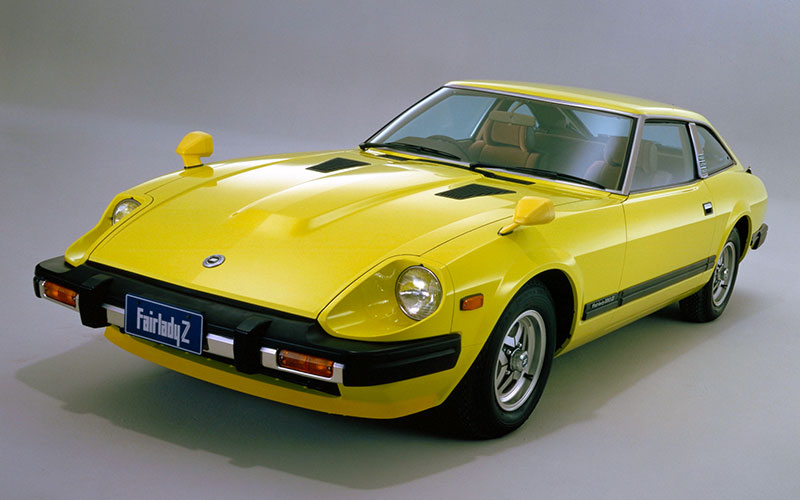
- Nissan introduced the first major generational change to their sports car in 1979.
- The S130 model was tailored to be a luxury grand tourer rather than a lightweight sports model.
- Nissan gave the S130 a softer suspension, added sound insulation, more comfortable seating, and available higher-end available features.
- The exterior design was further massaged in comparison to the outgoing 280Z with the second generation gaining more aerodynamic lines and integrated bumpers that fit more closely to car’s body.
- This generation was dubbed the Datsun 280ZX and featured the first direct association with its Nissan parent company in America. The subscript “by Nissan” was added to the Datsun badging.
- The 280ZX continued to carry an independent suspension with MacPherson struts at the front wheels and a semi-trailing arm setup for the rear.
- This generation continued to offer both two-seater and 2+2 versions.
- A 2.8L inline-6 was under the hood of the 280ZX that produced 135 horsepower. Nissan focused on fuel efficiency over performance for this unit leaving it actually slower than the original 240Z.
- 1980 added an available T-bar roof which added removeable roof panels to reveal its t-top design.
- A 10th Anniversary edition was also released in 1980 that came in either a two-tone black and gold or black and red paint job. This edition also featured leather seating and nearly every available feature.
- In 1981, Nissan introduced the 280ZX Turbo, basically the same sports car and the same 2.8L inline-6 engine but with a Garrett AiResearch TB03 turbocharger, new high volume oil pump, a Nissan developed Electronic Concentrated Control System, and on automatic models, an added oil cooler.
- This new turbocharged setup boosted the 280ZX Turbo to 180 horsepower.
- Naturally aspirated models were still available featuring a 10-horsepower bump over previous years.
- The updated naturally aspirated 280ZX could go 0-60 mph in 9.1 seconds, while the turbocharged 280ZX Turbo could do it in 7.4 with the manual transmission or 7.1 with an automatic.
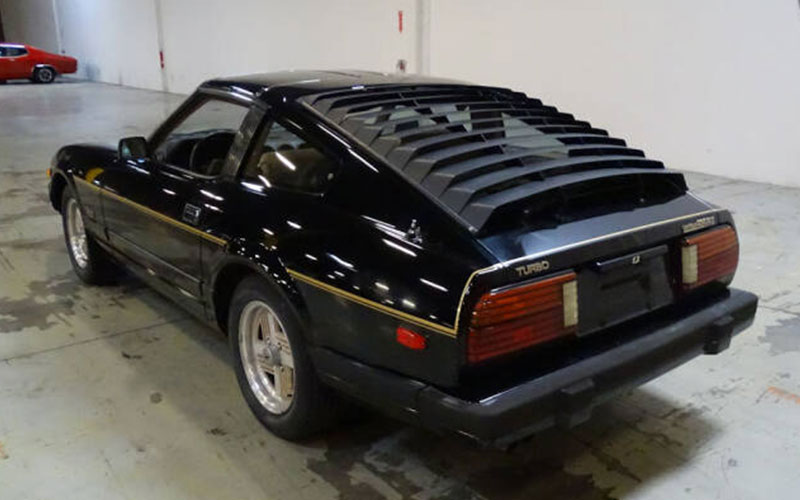
- 1982 gave the 280ZX a facelift that was comprised of new ducts in the hood, alloy wheels, updated B-pillar trim, revised taillights, and bumpers were color matched to the body along with added rubber covers.
- Power steering became standard equipment as a rack-and-pinion steering setup was utilized over the previous recirculating ball design.
- 1982 models gained an available Bord Warner T-5 5-speed manual transmission, the first instance of a Japanese car using a non-Japanese transmission.
- 280ZX Turbo models also had their sway bars and spring rated updated to account for the better acceleration from the turbocharged engine.
- The 280ZX won the IMSA GTU Championship and SCCA C Production class in 1979 and then won the IMSA GTO Championship with the 280ZX Turbo in 1982 and 1983.
- Famous actor Paul Newman not only helped promote the Datsun 280ZX through television commercials but raced the sports car with the help of Bob Sharp.
Nissan 300ZX – Third Generation (1984-1989)

- Nissan saw the need to return their sports car to its roots, so the third generation Z31 car debuted for the 1984 model year as the Nissan 300ZX.
- The Datsun brand was scrapped in favor of Nissan going forward.
- The model features better aerodynamics over the 280ZX and produced more horsepower through Japan’s first mass-produced V6 engine.
- Under the 300ZX hood was the VG30E, a single cammed naturally aspirated 3.0L V6 engine that produced 160 horsepower.
- A turbocharged variant known as the VG30ET added a Garrett T3 turbocharger to the V6 engine to produce 200 horsepower.
- Mated to these engines was either a 5-speed manual or a 4-speed automatic transmission.
- Nissan continued to provide some of the luxury comfort features prevalent in the 280ZX.
- A 50th Anniversary Edition was available during the 300ZX’s debut that added a two-tone pewter and black paint job. It also added a digital dash, extra gauges, electronic adjustable shock, Bodysonic speakers within the seats, embroidered floor mats, special 16-inch aluminum wheels, flared fenders, and special celebratory badging inside and out.

- 1985 made the T-bar roof standard across the model lineup, but the base two-seater would make it optional to reduce cost for 1986 models.
- 1988 swapped out the T3 in favor of the low inertia T25 turbocharger and an increased compression ratio of the V6 engine. This update not only bumped the turbocharged 300ZX up to 205 horsepower but boosted the naturally aspirated model up to 165 horsepower.
- 1988 also introduced the Shiro Special 300ZX which added stiffened springs and shocks, heavier duty anti-sway bars, pearl white paint with matching wheels, Recaro seating, and a viscous limited-slip differential. This version was recorded to have been capable of achieving a top speed of 153 mph – fastest car from Japan at that time.
Nissan 300ZX – Fourth Generation (1990-1996)
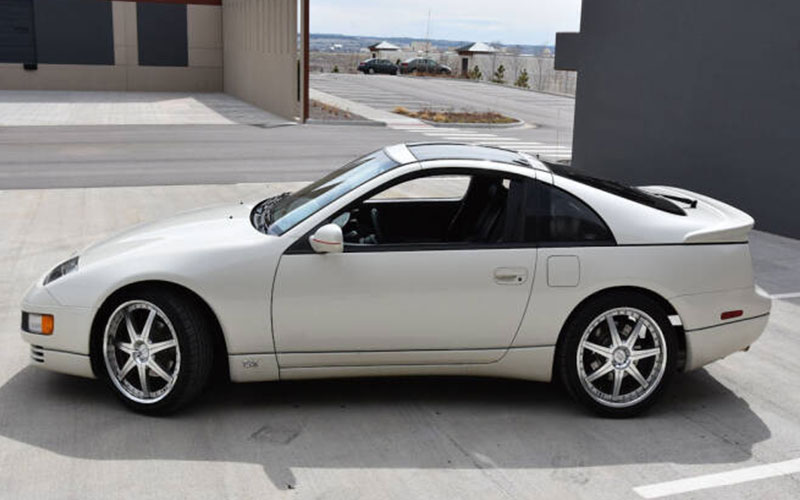
- Nissan updated their Z car to the fourth generation for the 1990 model year.
- The Z32, still called the Nissan 300ZX, was updated to carry rounder and wider body proportions that reduced drag slightly.
- This 300ZX carried a the larger VG30DE under the hood which was a 3.0L dual overhead cammed V6 that utilized Nissan’s Variable Timing Control system. The naturally aspirated V6 produced 222 horsepower.
- The 300ZX continued to provide a turbocharged version, but this time it carried two. The VG30DETT was the same 3.0L DOHC V6 paired with twin Garrett AiResearch turbochargers and dual intercoolers helping the unit produce 300 horsepower.
- 300ZX Turbo models could launch from 0-60 mph in 5 seconds and topped out at 155 mph.
- The Turbo models also came with Super High Capacity Actively Controlled Steering, an adjustable four-wheel steering system that was first seen on the R31 Skyline.
- 300ZX models were offered both as a two-seater or 2+2 once again.
- Turbo models came with T-bars as standard equipment while naturally aspirated models could be had with a hardtop.

- The 300ZX introduced a convertible option to the model, the first of the Z cars to do so.
- However, the automotive landscape shifted midway through the ‘90s and focuses shifted towards more SUVs. This change lead to the 300ZX’s demise by 1996. A Commemorative Edition was produced for the USA that featured unique special edition decals and certificates of authenticity.
- Nissan introduced a Vintage Z Program in the 300ZX’s absence from the USA. The company went about restoring vintage 240Z models and reselling them at dealerships. These resold 240Z’s even featured their original warranty coverage from Nissan.
- In 1999, the company revealed a 240Z concept car at the North American International Auto Show. While it looked like a modern take on the classic, under the hood of the concept was a 2.4L four-cylinder rather than a six-cylinder engine that previous Z cars were known for.
Nissan 350Z – Fifth Generation (2002-2008)
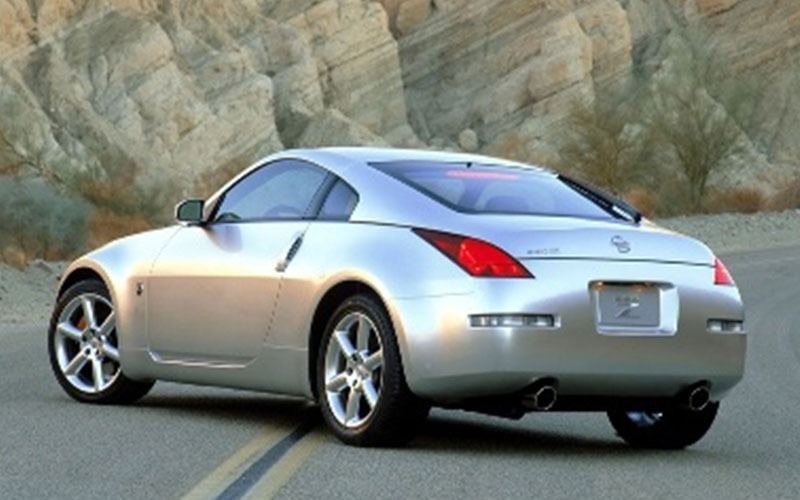
- Renault took a 44% stake in Nissan in 1999 leading to Carlos Ghosn taking over as CEO that same year. Ghosn later revealed in 2001 to reporters that the Z would return and be made profitable. What came about from that comment was the Z33 generation, better known as the Nissan 350Z.
- The 350Z was a front mid-engine two-seater sports car that took some inspiration from the positive perception from the 1999 240Z concept.
- Its exterior design kept the long hood and short deck previous Z cars were known for while adding bulbous fenders and a curved roofline that slopped into a fastback style to the rear.
- There was no 2+2 available like its predecessors. It was strictly a two-seater coupe.
- Under the hood of the 350Z was the VQ35DE, a naturally aspirated 3.5L DOHC V6 that utilized Nissan’s Continuously Variable Valve Timing Control System. It produced 287 horsepower.
- The 350Z Roadster was added in 2004 featuring a retractable soft-top.

- The 35th Anniversary Edition was released in 2005. It carried an updated V6 that produced 300 horsepower and featured special Z badging, 18-inch aluminum-alloy wheels, and a front spoiler. Customers could choose to have the special edition in one of four special paint colors.
- In 2006, Nissan gave the 350Z its first refresh. Bi-xenon projector headlights were installed, LED taillights were installed, the front fascia was revised, speed sensitive steering was added, and interior trim was updated. A larger brake booster, dual piston calipers at the front, and larger brake discs were added for higher trim levels.
- The VQ35DE Rev-Up engine that produced 300 horsepower was added to manual installed models. Automatic transmission models continued with the standard 287-horse VQ35DE.
- In 2007, Nissan replaced the VQ35DE engine with the VQ35HR engine. This new 3.5L V6 produced 306 horsepower, raised the redline to 7500 rpm, and provided more torque across the power band.
- Nissan also revised the hood to feature a bulge reminiscent to the original 240Z’s to account for the new engine’s size.
Nissan 370Z – Sixth Generation (2009-2021)
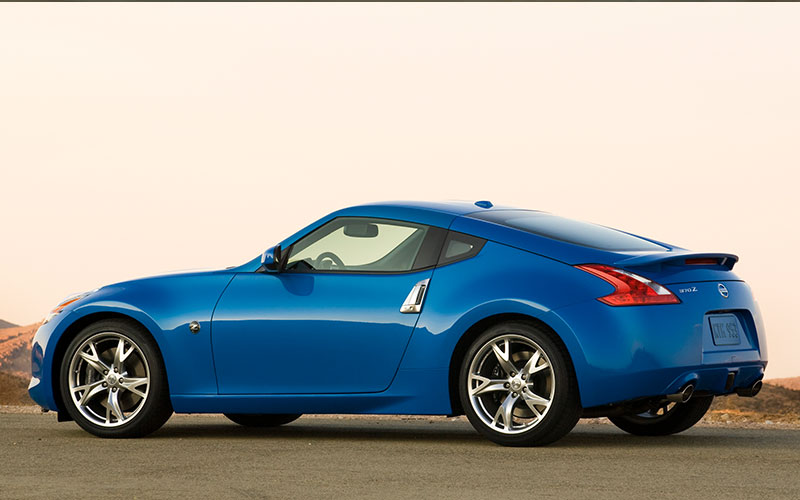
- Nissan continued the hunt for speed with the lighter and more powerful Nissan 370Z in 2009.
- The Z34 generation’s styling followed closely after the wildly popular Nissan R35 GT-R but was still very clearly a Nissan Z car.
- Under the hood of the 370Z was the new VQ37VHR 3.7L V6 engine producing 332-horsepower.
- For the first time, the size of the Z car actually shrunk in wheelbase over the previous car.
- Combining more horsepower with many lightweight aluminum body panels and structural components allowed the 370Z to hit 60 mph in just 4.9 seconds.
- Nissan engineers completely revised the body structure over the previous generation making it more rigid throughout its construction.
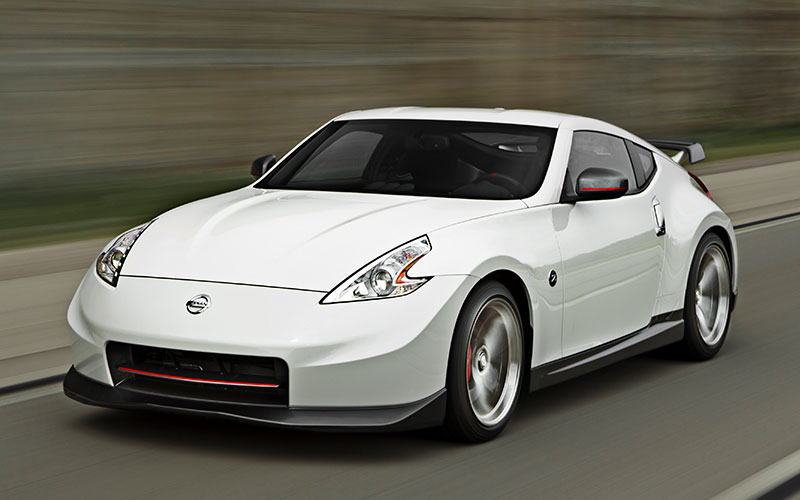
- The NISMO performance edition was introduced in 2009. This 370Z was tuned to produce 350 horsepower and featured a stiffened suspension, NISMO brakes, a front spoiler, and Yokohama ADVAN Y-rated tires wrapped around 19-inch RAYS wheels.
- In 2010, a hardtop convertible version of the 370Z was offered alongside the standard coupe and soft top roadster options.
- In 2013, Nissan redesigned the front and rear of the car enough to easily differentiate it from earlier cars. This update also added LED daytime running lights and updated wheel designs.
- The inside remained nearly identical and continued that way until the 370Z ended production in 2020.
Nissan Z – Seventh Generation (2023 to Present)
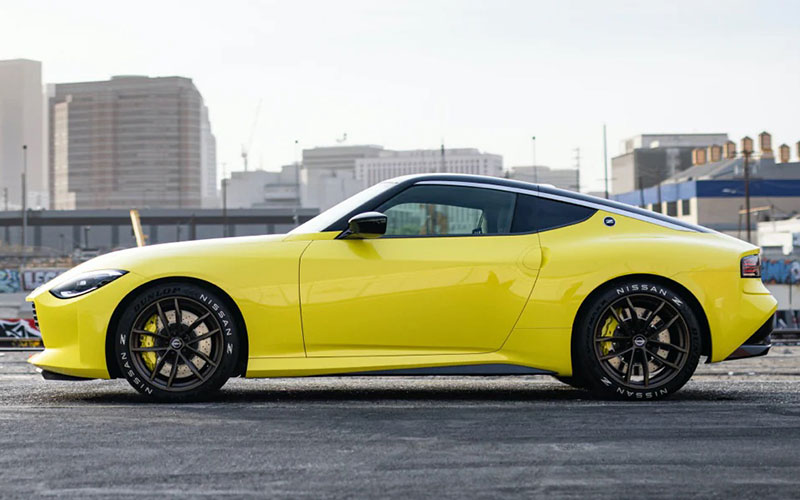
- Nissan put their Z cars on a brief hiatus before debuting the all-new Nissan Z generation for the 2023 model year.
- Simply recognized as the Nissan Z, this iteration of the sports car features a profile more like original 240Z’s proportions in a sharper, more modern look.
- Under the hood is the VR30DDTT, a twin-turbocharged 3.0L V6 engine taken from the Infiniti Q60 that produces 400 horsepower. It can be mated to a 6-speed manual or 9-speed automatic transmission.
- The NISMO Z version turns up that same engine to produce another 20 horses but is exclusively available with the automatic transmission.
- This new generation, designated as RZ34 internally, utilizes the same manual transmission, platform, and architecture from the prior 370Z generation.
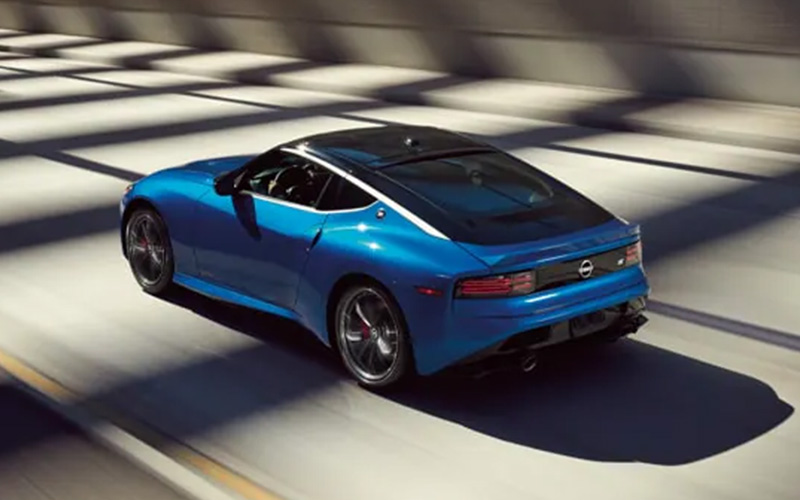
- A fully independent suspension featuring double-wishbones at the front and a multilink setup at the rear. The new Z also carries larger diameter monotube shocks, wider tires, and an even more rigid body in comparison to the 370Z.
- The interior of the Nissan Z was crafted with the help of both NISMO and Tsugio Matsuda, famed professional Japanese racecar driver. This input led to a sport focused experience featuring eight-way adjustable bucket seats similar to the GT-R, a programmable shift indicator and gauges related to turbo performance.
- The Nissan Z also features modern available driver-assistance features, a customizable 12.3 instrument display, and an 8-inch infotainment touchscreen with NissanConnect Services.
- While it’s a great sports car, its starting price of over $44,000 isn’t getting enough of the audience who would buy one in the door. Maybe Nissan and Honda’s new partnership that was announced in December of 2024 will lead to a more competitively priced Z to compete more closely to Toyota’s GR86 rather than their GR Supra.


